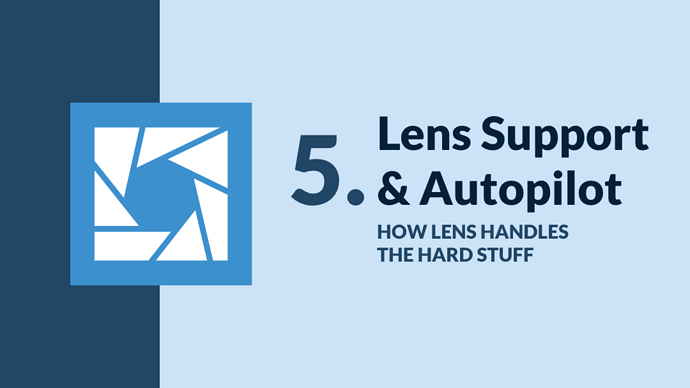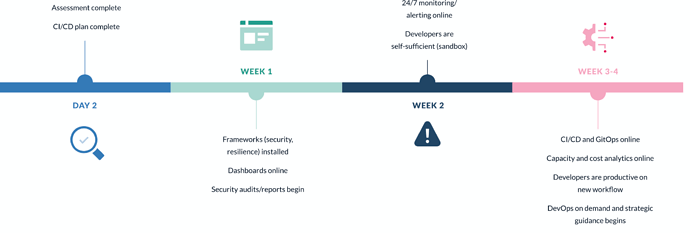Lens Desktop helps developers and operators save time and work smarter with Kubernetes. While a command-line client like kubectl is a refined instrument for Kubernetes professionals, the developers on your team probably aren’t Kubernetes pros, and they shouldn’t have to be—not if their job is to write, troubleshoot, and push code. In this series, we’ll explore how your team can use Lens to solve common Kubernetes challenges, including collaboration, security, and more.
By now, you’ve probably got a pretty good idea of how the vagaries of Kubernetes can slow you down and drain your time. You’ve also seen how Lens Desktop solves those problems and simplifies cloud native workflows.
Unfortunately, Kubernetes isn’t the only source of time-consuming context-switches:
- You run into a problem with your enterprise tooling that requires you to submit a support request. Where is the support portal? What ticketing system do they use, again? What was your login? Now you just need to figure out how to fill out a ticket correctly…
- Your builds are failing somewhere in the CI/CD pipeline. After double- and triple-checking, the problem isn’t the build—something has gone screwy in your pipeline. It was held together with rubber bands and duct tape to start with, so getting this fixed could take a while…
In other words, simplifying your Kubernetes workflow isn’t only a matter of easing your interactions with clusters. You need a way to mitigate the problems that pop up around your workflow, in the tooling.
Whether you’re struggling to build and maintain a seamless, modern DevOps pipeline or you run into issues with your Lens environment itself, Lens Desktop has you covered.
Lens Support
If you’re having issues with your software, you shouldn’t have to learn a new support system just to get a simple answer. With a Lens Pro subscription, Lens Desktop brings built-in live chat support from Lens engineers.
From any pane in Lens Desktop, click the Support button in the lower-right-corner of the screen.
You can get answers to any Lens-related question, such as:
- I can’t see metrics for my cluster nodes—can you help?
- Why can’t I find the Helm chart I need?
- How do I download logs for a pod?
Once you have the answers you need, there’s no need to worry about documenting your support conversation—you can export your support logs with a single click by pushing the button below the chat pane.
Plus, all of your support requests—no matter how they’re originated—are tracked and consolidated in the Lens Support Portal at https://support.k8slens.dev. This portal is available to all users with a Lens ID, giving you a knowledge base where you can quickly and easily find answers to common questions on a self-service basis.
Finally, the vibrant, global Lens community provides many venues to ask questions and discuss ideas, including:
-
Lens Forums (https://forums.k8slens.dev/) - A spot to discuss everything from day-to-day Lens use, extension development, and the k0s Kubernetes distribution used by Lens Desktop Kube.
-
The Lens Slack channel (Redirecting to Lens Slack) - An active Slack channel for live discussion and problem-solving.
Lens Autopilot
To work efficiently, developers working in cloud native environments need CI/CD pipelines and GitOps workflows that automate the development cycle and otherwise support many and frequent deployments.
But there’s a bit of a catch-22 here: to get a bespoke system that supports your needs and your workflows, you have to invest time and resources in building and maintaining those systems. Your team may or may not have the skills and experience to pull off this sort of project, and they definitely have better things to be doing.
The work won’t end with standing up a pipeline, either. As time goes on, you’ll need to manage onboarding (both for new team members and new apps), backups and upgrades, security auditing, and more.
Lens Autopilot uses the Lens platform as a springboard to deliver the DevOps Design/Build—and ongoing DevOps duties—that you need, all as a service. (Think: DevOps-as-a-Service.)
When your team starts using Lens Autopilot, a global team of cloud native experts works with you to define CI/CD automations and workflows tailored to your needs. Once your system is set up, Lens Autopilot (running through Lens Desktop) continuously monitors your clusters in order to deliver proactive incident response.
From the first assessment, it only takes four weeks to get your CI/CD and GitOps systems online—and your developers increasing in productivity. Benefits include:
- Bespoke CI/CD pipelines and GitOps workflows help you accelerate deployment and prioritize code.
- Continuous real-time monitoring identifies security issues in your pipeline—with cloud native experts on hand to guide you through remediation, proactive maintenance, policy issues, and role-based access control (RBAC).
- Cost and chargeback dashboards help you understand your Kubernetes spend. Break down costs by project or team and find where you may be wasting money on idle resources.
Lens Autopilot guarantees outcomes, as well:
Conclusion
With Lens Pro, support is integrated directly into the same interface as the rest of your workflow, saving your team’s collective time and helping you stay focused on code. Better yet, the extensibility and flexibility of Lens and Kubernetes can facilitate even more profound turbo-boosts for your development and deployment processes by delivering DevOps-as-a-service with Lens Autopilot.
Ready to learn more about Lens Autopilot? Check out the solution brief for more details on how it works, guaranteed outcomes, and use-cases.
Written by Eric Gregory for Mirantis!



